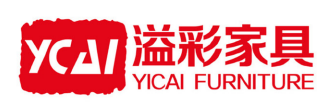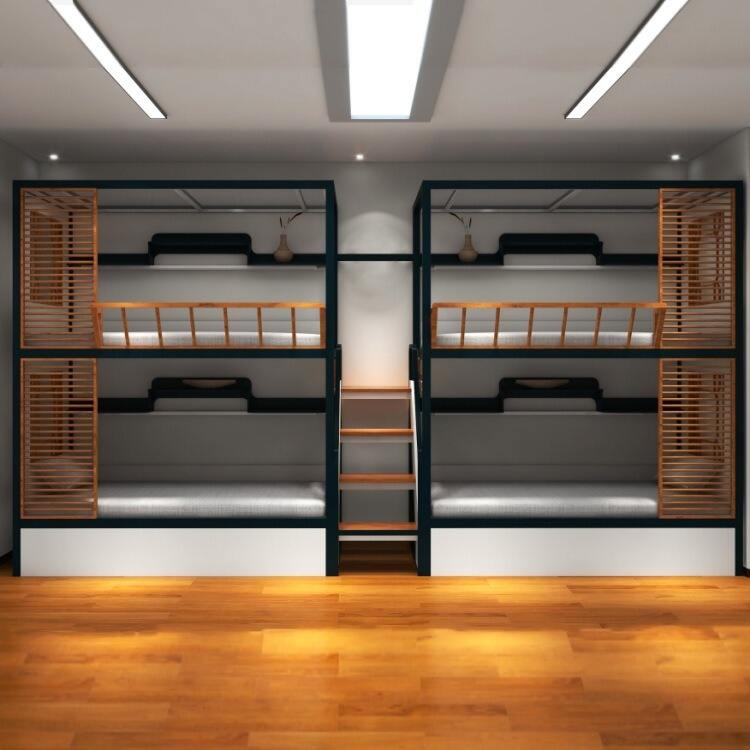Essential Safety Elements for Modern Sleeping Solutions
When it comes to maximizing bedroom space while ensuring a safe sleeping environment, selecting the right bunk bed becomes crucial. A metal bunk bed offers durability and stability, making it a popular choice among parents and space-conscious individuals. Understanding the key safety features not only provides peace of mind but also ensures compliance with current safety standards and regulations.
The importance of safety in sleeping arrangements cannot be overstated, especially when it comes to elevated sleeping surfaces. Modern metal bunk bed designs incorporate numerous safety features that address common concerns while maintaining functionality and aesthetic appeal. Let's explore the comprehensive safety aspects that should guide your purchase decision.
Structural Integrity and Material Quality
Framework Stability
The foundation of any safe bunk bed lies in its structural integrity. A well-constructed metal bunk bed should feature thick gauge steel tubing and reinforced joints. The frame should demonstrate minimal movement when shaken and maintain stability even with regular use. Premium manufacturers utilize advanced welding techniques and incorporate additional support bars to ensure maximum stability.
Weight capacity serves as a crucial indicator of structural integrity. Quality metal bunk bed designs typically support 200-400 pounds per level, depending on the model. This capacity should be clearly specified and exceed the anticipated combined weight of the mattress and occupant by a significant margin.
Material Durability
High-grade steel construction offers superior longevity compared to other materials. The metal framework should feature a protective coating or finish that prevents rust and corrosion. Powder-coated surfaces not only enhance durability but also resist chipping and scratching, maintaining both safety and appearance over time.
Connection points deserve particular attention, as they bear the most stress during use. Premium metal bunk bed designs incorporate reinforced brackets and often feature double-bolted joints for enhanced stability. These elements should be manufactured from heavy-duty materials and designed to withstand years of regular use.
Guardrail and Ladder Specifications
Protective Barriers
Guardrails represent a critical safety feature for the upper bunk. Industry standards require rails on all four sides of the top bunk, with the wall-side rails extending at least 5 inches above the mattress surface. The most secure metal bunk bed designs feature continuous guardrails along both lengthy sides, with gaps no larger than 3.5 inches to prevent entrapment.
The height of guardrails should accommodate the mattress thickness while maintaining adequate protection. Most safety guidelines recommend a minimum of 5 inches of rail extending above the mattress surface, though many premium models exceed this requirement for enhanced security.
Ladder Design
Access to the upper bunk demands careful consideration. A properly designed ladder should feature sturdy rungs with anti-slip surfaces, securely attached to the bed frame. The ideal metal bunk bed incorporates a ladder angle between 75 and 80 degrees, providing comfortable climbing while maintaining stability.
Ladder placement affects both safety and convenience. Some designs feature integrated ladders that form part of the end structure, while others offer attachable options. Either configuration should ensure firm attachment points and include handholds for secure navigation.
Safety Certifications and Compliance
Industry Standards
Reputable metal bunk bed manufacturers adhere to strict safety guidelines established by organizations like the Consumer Product Safety Commission (CPSC). These standards address critical aspects such as guardrail specifications, entrapment prevention, and structural stability requirements.
Look for products that meet or exceed ASTM F1427-13 standards, which outline safety requirements for bunk beds intended for residential use. This certification ensures comprehensive testing of critical safety features and structural integrity.
Testing Protocols
Quality metal bunk bed designs undergo rigorous testing procedures to verify safety features. These tests include stability assessments, impact resistance evaluation, and long-term durability testing. Manufacturers should provide documentation of successful completion of these standardized tests.
Regular inspection protocols should be included in the product documentation, guiding users in maintaining safety standards throughout the bed's lifetime. This includes checking for loose components, wear patterns, and maintaining proper assembly.
Additional Safety Considerations
Assembly Requirements
Proper assembly plays a crucial role in maintaining safety standards. A quality metal bunk bed should include detailed assembly instructions, clearly labeled components, and necessary tools. The assembly process should incorporate multiple safety checks and verification steps to ensure proper configuration.
Hardware quality significantly impacts long-term safety. Look for designs featuring self-locking nuts, proper thread engagement, and backup securing methods. Premium models often include spare hardware and offer customer support for assembly-related questions.
Mattress Specifications
Correct mattress selection enhances overall safety. The metal bunk bed design should clearly specify maximum mattress thickness for the upper bunk, typically not exceeding 6 inches to maintain proper guardrail height. Mattress support systems should prevent shifting while providing adequate ventilation.
Foundation design affects both comfort and safety. Look for models featuring solid or closely spaced slats that eliminate the need for additional box springs while providing proper mattress support. This design approach reduces overall height and enhances stability.
Frequently Asked Questions
How often should safety features be inspected on a metal bunk bed?
Regular safety inspections should be conducted monthly, checking for loose hardware, wear on ladder rungs, and integrity of guardrails. Additional inspections are recommended after any significant movement or reassembly of the bed.
What is the recommended age for upper bunk use?
Most safety guidelines recommend children be at least six years old before sleeping in the upper bunk. However, individual maturity and ability to safely climb the ladder should be considered when making this decision.
Can additional safety features be added to an existing metal bunk bed?
While many metal bunk bed designs accommodate aftermarket safety accessories, it's crucial to verify compatibility with your specific model. Manufacturer-approved additions maintain warranty coverage and ensure proper fit and function.
What are the key indicators that a metal bunk bed needs replacement?
Consider replacement when observing persistent squeaking, visible rust or corrosion, loose joints that cannot be tightened, or any structural deformation. These signs indicate potential safety compromises that warrant immediate attention.


